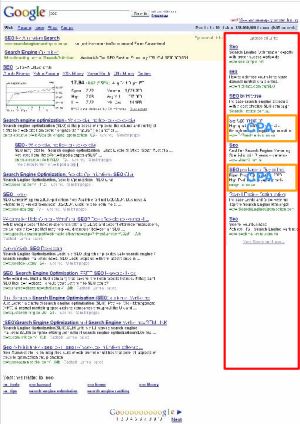I was reading a CNET blog post Google deems cost-per-action as the ‘Holy Grail’ by Stephan Spencer. At the Search Engine Strategies (SES) conference in San Jose, Marissa Mayer, Google’s VP of Search Product and User Experience, delivered a keynote in which she talked, inter alia, about the Cost Per Action (CPA) model for advertisers and that it is a long way off.
In a CPA scenario, the advertiser pays only when a pre-agreed action takes place, such as filling out a form, making a purchase, speaking to the advertiser by phone, etc. Google has been testing CPA with select AdWords advertisers in several ways.
For example, in its Click to Call experiment, the advertiser bids, say, $25 as opposed to $2 per click to have a high position (subject to other factors, such as Quality Score) but pays only if someone clicks and speaks to the advertiser via the Google-arranged phone call. The high bid makes it fair to regular PPC advertisers who pay for every click, fraudulent or otherwise, who are also bidding high to be in the higher PPC positions. The CPA bid could be 8 to 12 times higher – I have no idea how it is worked out, but Google has access to the conversion stats of advertisers if they choose to track conversions for online transactions. Where e-commerce is present, it is easy to tell what percentage of clicks end in transactions.
If CPA does catch on, Stephan opines that SEO will become more diversified into helping clients with conversions, perhaps by offering organic search cost-per-click (CPC) which is offered, coincidentally, by his own company. 🙂 Yes, a few SEO companies are already offering similar solutions.
Google apparently uses the example of buying an airline ticket to explain the CPA scenario. As things stand, I don’t think this would happen. For one, affililate commissions on airline tickets are low and probably impractical for cheap fares.
Google Checkout and CPA
 Google’s PayPal-like offering is Google Checkout, which I rarely encounter in real life, where PayPal is still king. Over 12 months ago, Om Malik wrote about some connection between Google Checkout and CPA, and a few others linked to his post, but I haven’t seen the obvious killer connection that is staring Google in its face.
Google’s PayPal-like offering is Google Checkout, which I rarely encounter in real life, where PayPal is still king. Over 12 months ago, Om Malik wrote about some connection between Google Checkout and CPA, and a few others linked to his post, but I haven’t seen the obvious killer connection that is staring Google in its face.
There is some unused space on a Google search results page that could be reserved for CPA without making it too expensive. For example the 8 ads on the right could have some CPA ads interspersed, say in the fourth and lower positions. Or they could start below the least attractive 8th PPC ad but be highlighted to draw eyeballs that would not otherwise be looking here. The usability experts can work something out. Or, Google could use something like Peel-Away Ads for CPA advertisers.
The way Google can win at CPA is to leverage Checkout by offering cheap CPA clicks to advertisers who switch to it exclusively for e-commerce. As Checkout transactions are visible to Google, it would be easy to measure the conversions (Actions). How about a tiered price structure:
- Sale CPA = 50% of Checkout sale amount or Average CPC rate x 5, whichever is lower
- Form Completion CPA = Average CPC rate x 3
I am just throwing some numbers there – don’t take them literally. The final numbers should make business sense to the advertiser.

